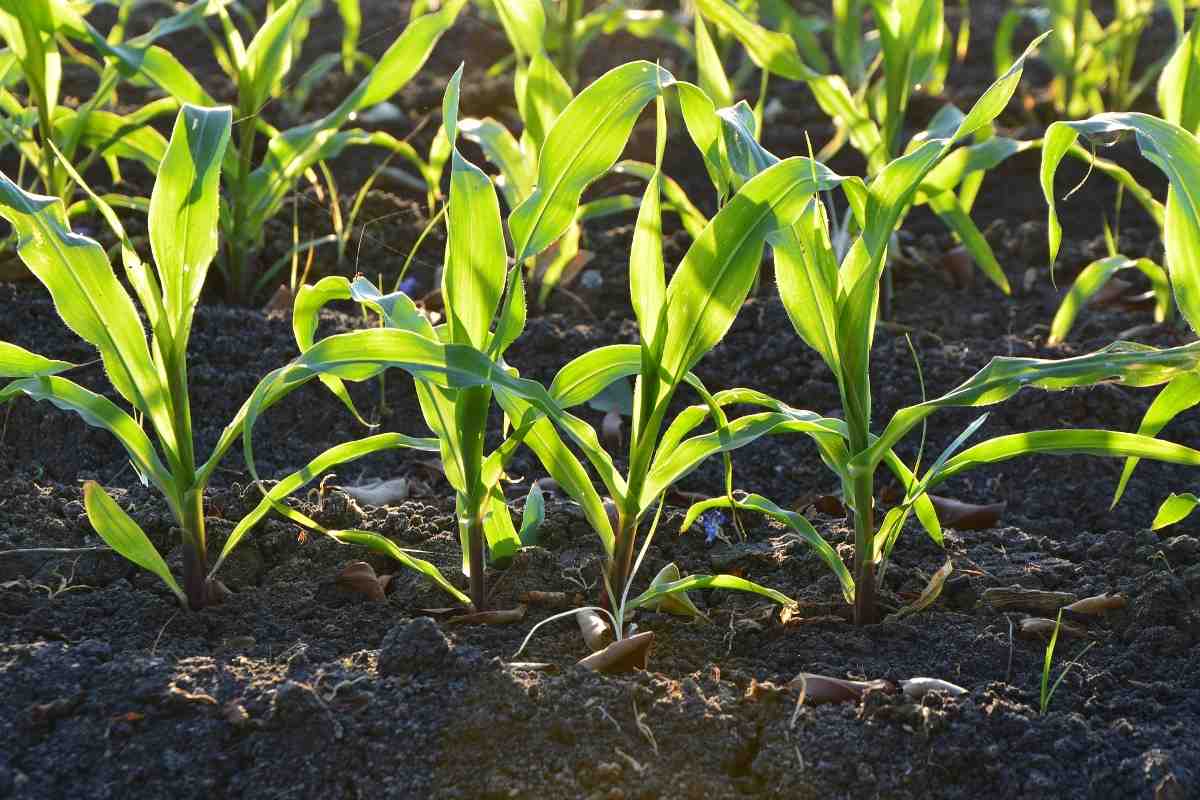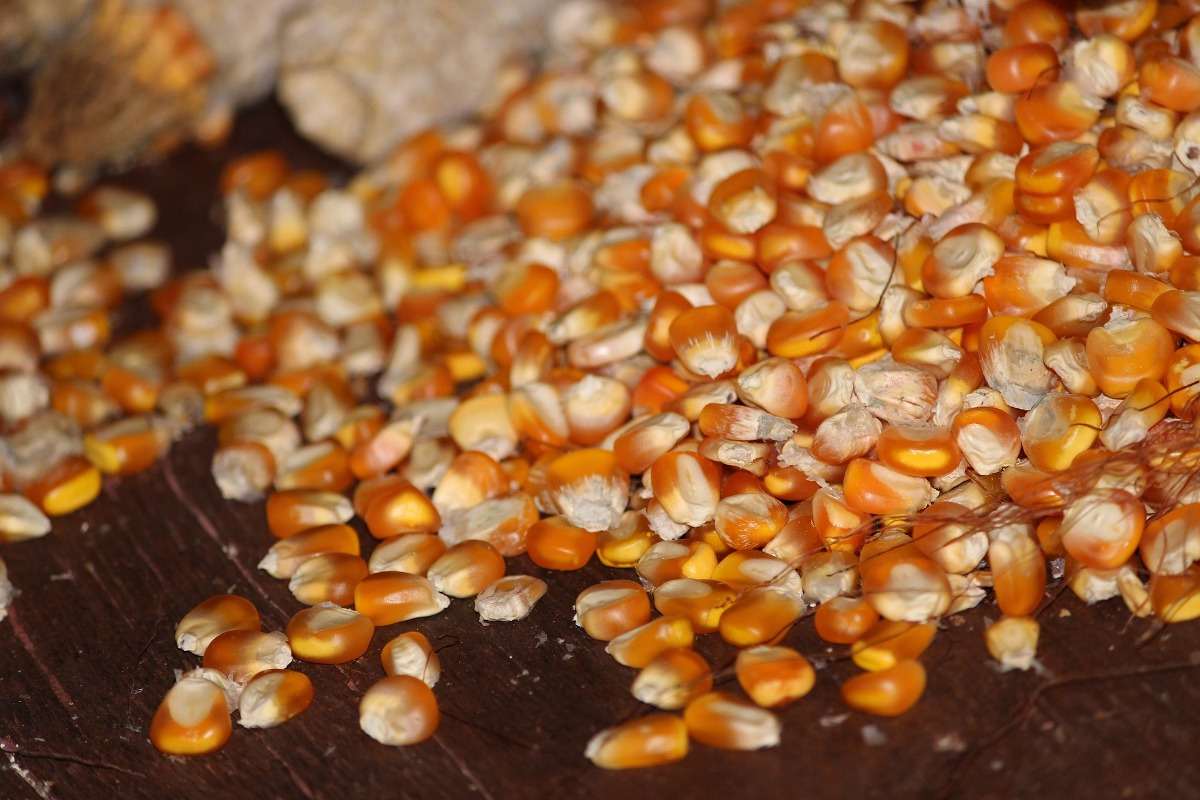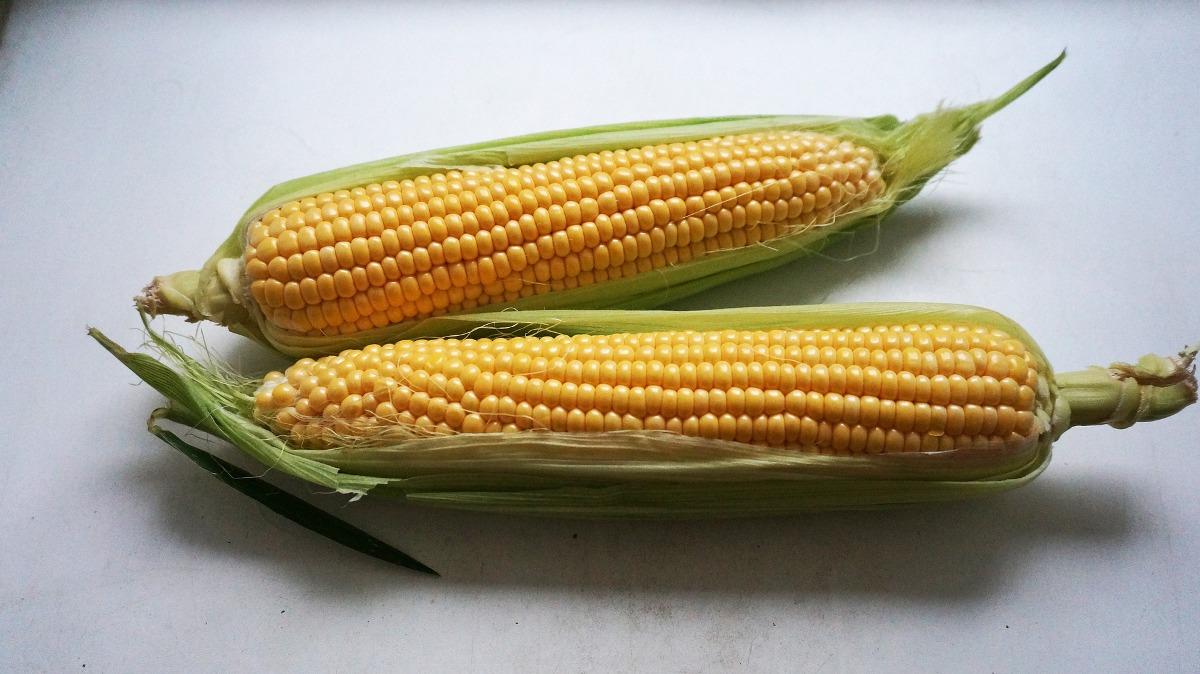Introduction to Corn seed germination (Maize): Corn is a tender annual and a member of the grass family that can grow about 4 to 12 feet tall. It is a tall annual cereal grass that bears starchy kernels on large ears. It is a warm-season crop. Corn germination and emergence are optimal when soils temperatures are about 85 to 90°F. Cool conditions during planting impose significant stress on Corn emergence and Corn seedling health.
A guide to Corn seed germination (Maize) process
Corn seed is particularly susceptible to cold stress during imbibitions. Warmer, moist conditions for the first 24 to 48 hours after planting can mitigate much of the cold stress. In lighter-textured soils, spring nighttime temperatures can drop below 50°F, even after warm days, inflicting extra stress on Corn emergence. Select a large container that is at least 12 inches deep and wide. You can grow about 4 Corn plants in this size of the pot. Make sure your pot has enough drainage holes in the bottom and grow Corn in pots, choose a dwarf variety that does not exceed 4 or 5 feet (1.2 to 1.5 m) height. Some good Corn choices are short-stemmed ‘Trinity’ and ‘Sweet Painted Mountain’. In this article we also discussed below topics;
- Tips for growing Corn
- How to germinate Corn seeds indoors
- How to grow Corn at home
- Corn growing time from seed
- Corn seed germination time
- Corn seed germination temperature
- Should Corn seeds be soaked before planting
- Germinate Corn seeds indoors
- Paper towel germination method for growing Corn
- How long do Corn seeds take to germinate
Prepare the soil for growing Corn
Corn plant prefers soil that is nitrogen-rich and well manured. If possible, plant in soil that you have already grown beans, as they help to enrich the soil with more nitrogen. And remove all weeds from the area. If the soil is below, increase the temperature by covering the ground in black plastic and cutting holes to plant the Corn through. Add compost or manure to the soil 2 and 4 weeks before planting so that it has time to incorporate with the soil.
Crusted soil
Heavy rains or frequent shallow watering can slow Corn plants in breaking the ground’s surface. Both contribute to the soil forming a hard surface crust and seed Corn can germinate below the soil, but the shoots can be unable to break through the crust. When the garden soil is that dry, lightly break up its top surface with a clawed garden tool. Adding compost or other organic amendments to the soil before planting could help prevent crusting.
Soil temperature and moisture for Corn seed germination
Soil temperature in Corn is one of the best predictors of how long it will take Corn to break the ground’s surface. Soil temperature is generally 5 to 10 degrees cooler than the air temperature, and soil temperature increases slower than the air temperature in spring. It could take several days of air temperatures in the 60 to 90°F range to warm soil to 60°F in the spring. If your Corn is slow to germinate, you could have planted it before the soil was warm enough. At a soil temperature of 55°F, Corn could take up to 22 days to germinate.
In case if you miss this: Growing Hydroponic Carrots.

To sprout quickly, Corn seed needs adequate moisture in the soil, which kicks off the germination procedure. A lack of moisture can hinder sprouting, and heavy rains can give too much moisture in the soil, which also prevents Corn from germinating. Plant Corn in areas that receive full sun and well-drained soil. Incorporating aged manure or compost before planting could help the soil drain better, preventing rotting seeds.
Soak the Corn seed first for better germination
Sow seed in full sun when the soil warms to between 60 and 95°F. Corn does not germinate well in cold soil and low temperature will die. Corn seeds can appear shrunken; before they can germinate, they slowly plump up with water. To help them along, soak dry Corn seeds in water at room temperature overnight before planting.
Any seedling transplants must be started in peat pots three weeks before you are ready to set them out. To start seedlings indoors, sow 2 seeds each about an inch deep in 3 inches peat pots. To help them germinate, keep the room temperature at a gentle heat of 55 to 59°F. Once they’ve germinated, use a cool-white fluorescent grow light to aid their growth and place the light about 2 inches above the plants. Leave the light on 12 to 14 hours a day and be sure to raise it as the plants grow.
Before transferring Corn seedlings outdoors, harden them off by gradually acclimating them to outside conditions. Place the Corn seedlings outside during the day when temperatures are above 40°F; do not set the plants in direct sun. Set them wherever there’s shade and move them out a bit more each day for greater exposure to the sun. Each night, bring the Corn plants indoors. Provided they are at least about 2 inches tall, after 3 to 5 days of hardening off, they will be ready to transplant outside.

Testing seed before you plant your garden is easy;
- First, soak 10 to 20 seeds overnight.
- Dampen a paper towel and put it in a glass or steel pie dish (do not use aluminum).
- Dampen another paper towel and then lay on the Corn.
- Insert pan in large, loose plastic bag and place in a warm location.
- Check to assure the upper towel stays damp.
- In two-four days Corn seed will sprout and all must sprout in double the time the first one does.
Environmental factors influencing Corn seed germination
Corn seeds should absorb about 30 percent of their weight in water before they will resume active embryo growth. Germination is also more successful when the seed’s environmental temperature is 65°F or higher.
H2O
The soil moisture for seed germination process to occur is 30% for Corn. This is a quick way to estimate soil moisture for clay, clay loam, silty clay loam, sandy clay loam, loam or silt loam soils. At 25 to 50% soil moisture, a ball of soil formed with the hand will feel slightly moist, form a weak ball when gripped in hand. But it won’t leave dirt stains on your hand as wetter soil would, and few aggregates can break off of the ball.
You may also like the Growing Microgreens in Pots.
Temperature
Minimum and optimum temperature for seed germination;
Corn – minimum 46° F; optimum 86°F
Planting should not occur before the soil temperature range is near 50°F for Corn and 55°F for soybeans with a positive weather outlook. At 50°F Corn will take about 25 days to emerge. At 55-60°F Corn will take 10 to 14 days to emerge. At 65-70°F Corn only takes 5 to 8 days to emerge. How long a seed can last in the soil and remain viable depends on temperature range, moisture, and pests.
Oxygen
Oxygen is necessary as respiration increases during the seed germination process. A difference of the hypogeal germination associated with Corn is the coleoptiles. Coleoptiles are a temporary sheath that protects the plumule as it pushes through to the soil surface. As the plumule expands when it senses red light, the first leaf breaks through the coleoptiles and photosynthesis begin soon after.
Water
Water the Corn plant every other day, keeping the soil constantly moist. Water is a very important ingredient to get sweet and soft Corns, especially at the time of fruiting you’ll need to water potted Corns more.
Fertilizer
Add fertilizer after 10 weeks from sowing and dig a hole about 2 cm in depth and diameter around each plant. Pour 1/2 tablespoons of about 5-10-10 or 10-20-20 fertilizer per plant, and incorporate the soil.
The process of Corn seed germination
- Corn will germinate when the soil temperature is as low as 45°F. Seed germination at 45 degrees does not mean the plant will be rapidly growing. In fact, at that temperature range, growth is extremely slow. The minimum soil temperature for significant growth in Corn is about 55°F. The optimum temperature for germination for Corn is 60°F and the optimum temperature for growth in Corn is around 80°F.
- Put Corn seeds in a clear glass, cover them with water and let them soak overnight. While the kernels won’t double in size, they will expand use a jar with extra room
- Drain the Corn seeds in the morning and give them a fresh rinse in cool water. Cover them with a paper towel to conserve moisture, and rinsing them at least 3 times daily until they germinate. In roughly 2 to 5 days, a small root will emerge from each kernel; it is planting time.
- Soak small peat pots in water and then fill them with moistened soilless planting medium. Make about 1 to the 1½-inch-deep indentation in the center of each pot with a finger. Carefully plant one Corn seed in each pot, with the root facing down. Then cover the hole with the moistened medium.
- Locate the planted pots on a bread rack with a tray underneath it to catch excess water. Leaving an air space at the bottom of the pot discourages the taproot from growing out of the planted pot. Then set the pots in a sunny location or under a grow light. Water regularly and transfer the pots to your garden once the plants have fully emerged and the outside soil temperature is at least 60°F.
You should not miss the Growing Coriander in Aquaponics.
Basic tips for Corn seed germination
- Start the germination process about 2 weeks before the typical last spring frost.
- The Corn germination rate is normally around 75 percent discard any kernels that haven’t germinated after one week.
- Plant the seeds in pots as soon as seed germination occurs and a tiny root has emerged. Thoroughly water the soil after planting the pots in the garden.
- Corn easily cross-pollinates with other Corn. If you will be planting several cultivars, stagger plantings so they tassel at least 2 weeks apart.
Paper towel seed germination for growing Corn
- To set up your experiment, create a Corn nursery in 2 clear plastic cups. Lay two paper towels on top of each other and then fold them together into a square.
- Push the folded paper towels into the cup thus it lines the inside of the cup walls.
- Mist a few more paper towels, crumple them, and stuff them inside so the lining is pushed fairly firmly against the cup. And repeat this set up with the other plastic cup.
- Between the lining and plastic of the first cup, evenly place 5 Corn kernels. In the second cup, alternate two pinto beans, and 2 Corn kernels. And put more damp paper towels in each cup to hold the seeds in place if you need to. Place the cups in a warm, sunny location.
- Watch the Corn seeds over a week, making sure that the paper towels remain moist but not wet. Each day, find the Corn kernels under your magnifying glass.
- After 5 days, remove one of each type of seed. At the end of a week, remove all of the kernels and Corn seeds from the cups. Add soil to 2 cups. Plant the healthiest-looking Corn kernel in the cups and continue to watch them as they grow.
Pick your Corn
The Corn is ready to be harvested when the kernels are tightly packed and make a milky fluid when punctured. Eat Corn immediately after picking for the best flavor and optimum freshness.

Corn requires from 60 to 100 days reaching harvest depending on the variety and warm weather. It is ready for harvest when ears turn dark green, silks turn brown, and kernels are soft and plump; squeeze a kernel and the juice will be milky, not clear. Then pick Corn by grabbing the ear and giving it a sharp downward twist. Each stalk of Corn will make one or perhaps two harvestable ears of corn. Harvest generally comes about 20 days after the silks appear. Corn harvest in the morning and plunge ears immediately into cold water to preserve sweetness.
You may be interested in the Basic Steps of Organic Farming.